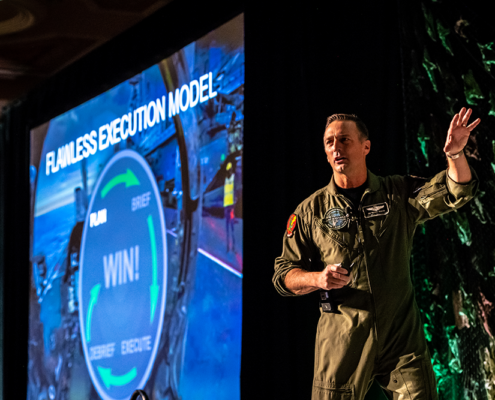 https://www.afterburner.com/wp-content/uploads/2024/09/the-execution-gap-afterburner.jpg
1080
1920
Nate Riggins
/wp-content/uploads/2024/07/Afterburner-Logo-Resize-Fullcolor-300x93.png
Nate Riggins2024-01-08 16:24:542024-11-22 15:01:04Closing the Execution Gap: Transforming Meetings and Strategies
https://www.afterburner.com/wp-content/uploads/2024/09/the-execution-gap-afterburner.jpg
1080
1920
Nate Riggins
/wp-content/uploads/2024/07/Afterburner-Logo-Resize-Fullcolor-300x93.png
Nate Riggins2024-01-08 16:24:542024-11-22 15:01:04Closing the Execution Gap: Transforming Meetings and Strategies
FLEX YOUR MUSCLES: How Flawless Execution Helps You Achieve Your Individual Goals
A well-crafted Mission Objective is clear, measurable, achievable, and aligned with your High-Definition Destination. Mission Objectives are not always simple to create, but they set the course for the rest of the mission. In this webinar, David “Finch” Guenthner will discuss how you can take your plan’s Mission Objective and break it out into personal goals to achieve individual success.
The Key Methodology
Flawless execution, our key methodology taught to thousands of organizations and individuals, is specifically designed to help you achieve your personal goals. Born and bred in a zero-tolerance world of combat aviation, it’s a process designed to be simple, scalable, and repeatable. As an iterative cycle, flawless execution can be used to drive daily, monthly, even quarterly results for your team’s or your personal goals.
Six Steps of Mission Planning
At Afterburner, we have helped organizations implement Flawless execution, or FLEX, in a wide variety of industries. What we have learned over time is that most companies consider an annual or quarterly plan to be sufficient and don’t take the necessary time to draft a well-formulated plan. Planning is an incredibly valuable tool for organizations. It is also an incredibly valuable tool for individuals to use. The main reason for planning is to establish the finish line up front, so we can work backward in our planning process to figure out the necessary steps it will take to get there. We strongly encourage you to employ Open Planning within an organization or in your personal life. Open Planning helps to get multiple people get involved in the planning process and creates more opportunity to identify threats, contingencies, and potential failures in the plan. Furthermore, this establishes buy-in from multiple people, so they stay engaged and involved in the success and execution of the plan.
Step 1: Determine the Mission Objective
The very first thing that we do when we plan is we determine our Mission Objective. The mission objective is not a statement of intent; it is a laser-focused statement. As a fighter pilot, for mission objectives to even be considered viable, it must meet four criteria – Clear, Measurable, Achievable, and aligned with our strategic goals. As an individual, this can be answered by asking if the actions you take today align with your personal goals for the future.
Step 2: Identify the Threats
Now that you have a clear Mission Objective, the next step in the mission planning process is to Identify the Threats. Threats are anything that will stand in the way of you achieving your personal Mission Objective. The roadblocks you must overcome. We try to identify threats in the planning phase, instead of waiting until we are deep in execution, to eliminate as many pop-up threats as possible ahead of time. This is where Open Planning can be implemented.
Step 3: Identify your Available and Required Resources
The next step we have to take when we plan out a mission is to Identify our Available and Required Resources. What are the things that we have at our disposal right now that are going to help us either overcome those threats or achieve the specific mission objective? Or, what is something you already know will be a resource to you during the execution phase that you can get ahead of time?
Step 4: Evaluate Lessons Learned
We have identified the mission objective and talked about the threats and resources. Now, we get to the step where we Evaluate Lessons Learned. In a perfect world, if this was within your organization, you would get the lessons learned from the debriefs of previous missions. You would generate the lessons learned from a previous experience and share it with team members within your team or across the organization.
For your personal mission objective, you likely do not have the specific past experiences and lessons learned to apply to the new mission. In this case, reach out to someone you know has experience with what you are trying to accomplish and ask for their advice or opinions. Ask them to share some of the lessons learned from their previous experiences.
Step 5: Develop a Course of Action
Now that we have determined the Mission Objective, looked at all the data from the Threats, Available Resources, and Lessons Learned, it is finally time to come up with the battle plan, our Course of Action. The Course of Action (COA) is a step by step guide for who will do what by when. It is designed to make sure that we get the job done. In the past, you may have been given a project and simply identified step one, step two, and skipped over the parts where you identify the threats to resources and what is important. We are trying to get you to start thinking about applying more risk analysis. Getting buy-in from everyone involved with COAs is an important step towards this.
Step 6: Plan for Contingencies
Now that you have your Courses of Action outlines, there is one last thing you need to take into consideration. Plan for Contingencies. Any time you set out to accomplish a goal or execute a plan, you must take into account the inevitable pop-up threats that could derail your mission and be prepared for them. You want to be proactive with your actions when those things don’t go according to plan, instead of reacting to them when they actually happen real-time.
A Personal Approach
Knowing these steps and applying them to a business model seems much simpler than applying them to your personal goals and daily life. A few years ago, after an event with a great organization, one of the members of their team reached out to Joel “Thor” Neeb, a member of Afterburner and now Afterburner’s President. He shared his personal struggle with feeling a bit above his “fighting weight,” and out of shape in general with a goal of getting back to just below 200 lbs. Thor sat down with him and worked through the Flawless Execution methodology starting with the Six Steps of Mission Planning. The first thing Thor did was help him to narrow the Mission Objective into a much more specific objective. This gentleman committed himself to be below 200 pounds by a specific date and agreed to weekly check-in meetings with Thor.
When they started out on this journey together, this gentleman was hovering right around 250 pounds and he set a date in the future and said, “I will be below 200 pounds on that date.” And between him and Thor, they went through the planning process identifying Threats and Available Resources. They came up with a plan and Thor helped him remain accountable throughout the execution of that plan. And on the last day, on the day it was due, he texted a picture to Thor of the scale just under 200 pounds. When we talked to this gentleman, later on, he told us that every single time he saw a pound drop off the scale, he got more and more motivated and excited about the advancement towards his long-term goal.
Trust the Process
Andy Rooney said it best, “Everyone wants to be on top of the mountain, but all the happiness and growth occurs while you are climbing.” Ultimately that’s the role, it’s the process, it’s that execution cycle that gets you motivated and excited, pushing you up the mountain, to losing one more pound, or to that next level. If you set the goal and you work the plan, you can achieve it and trust that the process is what will drive motivation.
LEARN HOW TO BUILD AN ELITE TEAM TODAY!
About the Speaker
David “Finch” Guenthner, a former F-16 pilot and Air Force One Team member, has executed combat operations in both Iraq and Afghanistan. As a Partner at Afterburner, Finch provides world-class consulting and leadership training to Fortune 500 companies across the globe, helping them connect strategy to execution to achieve individual and team success.
Share This Post
More Like This
 https://www.afterburner.com/wp-content/uploads/2024/09/the-execution-gap-afterburner.jpg
1080
1920
Nate Riggins
/wp-content/uploads/2024/07/Afterburner-Logo-Resize-Fullcolor-300x93.png
Nate Riggins2024-01-08 16:24:542024-11-22 15:01:04Closing the Execution Gap: Transforming Meetings and Strategies
https://www.afterburner.com/wp-content/uploads/2024/09/the-execution-gap-afterburner.jpg
1080
1920
Nate Riggins
/wp-content/uploads/2024/07/Afterburner-Logo-Resize-Fullcolor-300x93.png
Nate Riggins2024-01-08 16:24:542024-11-22 15:01:04Closing the Execution Gap: Transforming Meetings and Strategies https://www.afterburner.com/wp-content/uploads/2024/09/Group_Meeting_2-1.jpeg
1707
2560
Nate Riggins
/wp-content/uploads/2024/07/Afterburner-Logo-Resize-Fullcolor-300x93.png
Nate Riggins2024-01-02 18:26:092024-11-22 15:01:07Fueling Business Agility: The Strategic Pivot
https://www.afterburner.com/wp-content/uploads/2024/09/Group_Meeting_2-1.jpeg
1707
2560
Nate Riggins
/wp-content/uploads/2024/07/Afterburner-Logo-Resize-Fullcolor-300x93.png
Nate Riggins2024-01-02 18:26:092024-11-22 15:01:07Fueling Business Agility: The Strategic Pivot https://www.afterburner.com/wp-content/uploads/2024/09/Christian-_Boo_-Boucousis-on-stage-1.jpeg
1066
1600
Nate Riggins
/wp-content/uploads/2024/07/Afterburner-Logo-Resize-Fullcolor-300x93.png
Nate Riggins2024-01-01 17:03:122024-11-22 15:01:08How to Pick the Right Guest Speaker for Your Event
https://www.afterburner.com/wp-content/uploads/2024/09/Christian-_Boo_-Boucousis-on-stage-1.jpeg
1066
1600
Nate Riggins
/wp-content/uploads/2024/07/Afterburner-Logo-Resize-Fullcolor-300x93.png
Nate Riggins2024-01-01 17:03:122024-11-22 15:01:08How to Pick the Right Guest Speaker for Your Event https://www.afterburner.com/wp-content/uploads/2024/09/Presentation_2-1-scaled-1.jpg
1793
2560
Nate Riggins
/wp-content/uploads/2024/07/Afterburner-Logo-Resize-Fullcolor-300x93.png
Nate Riggins2022-10-26 19:08:222024-11-22 15:01:14Your Action Plan for Closing Critical End-of-Year Opportunities
https://www.afterburner.com/wp-content/uploads/2024/09/Presentation_2-1-scaled-1.jpg
1793
2560
Nate Riggins
/wp-content/uploads/2024/07/Afterburner-Logo-Resize-Fullcolor-300x93.png
Nate Riggins2022-10-26 19:08:222024-11-22 15:01:14Your Action Plan for Closing Critical End-of-Year Opportunities
The Best End-of-Quarter Use of Technology in Business
Business Culture, Goal Execution, Strategic Planning https://www.afterburner.com/wp-content/uploads/2024/09/[email protected]
596
1060
Nate Riggins
/wp-content/uploads/2024/07/Afterburner-Logo-Resize-Fullcolor-300x93.png
Nate Riggins2020-08-14 18:52:432024-11-22 15:01:16Reimagine Your Strategic Alliances in 2020
https://www.afterburner.com/wp-content/uploads/2024/09/[email protected]
596
1060
Nate Riggins
/wp-content/uploads/2024/07/Afterburner-Logo-Resize-Fullcolor-300x93.png
Nate Riggins2020-08-14 18:52:432024-11-22 15:01:16Reimagine Your Strategic Alliances in 2020 https://www.afterburner.com/wp-content/uploads/2024/09/Virtual-planning.jpeg
700
1050
Nate Riggins
/wp-content/uploads/2024/07/Afterburner-Logo-Resize-Fullcolor-300x93.png
Nate Riggins2020-04-21 09:00:182024-11-22 15:01:17Why Preparing for the Unexpected is Essential
https://www.afterburner.com/wp-content/uploads/2024/09/Virtual-planning.jpeg
700
1050
Nate Riggins
/wp-content/uploads/2024/07/Afterburner-Logo-Resize-Fullcolor-300x93.png
Nate Riggins2020-04-21 09:00:182024-11-22 15:01:17Why Preparing for the Unexpected is Essential https://www.afterburner.com/wp-content/uploads/2024/09/Annual-Strategic-Planning-Session_14505b37fc.jpeg
1708
2560
Nate Riggins
/wp-content/uploads/2024/07/Afterburner-Logo-Resize-Fullcolor-300x93.png
Nate Riggins2019-08-30 01:39:202024-11-22 15:01:19Why Your Annual Strategic Plan Will Fail
https://www.afterburner.com/wp-content/uploads/2024/09/Annual-Strategic-Planning-Session_14505b37fc.jpeg
1708
2560
Nate Riggins
/wp-content/uploads/2024/07/Afterburner-Logo-Resize-Fullcolor-300x93.png
Nate Riggins2019-08-30 01:39:202024-11-22 15:01:19Why Your Annual Strategic Plan Will Fail https://www.afterburner.com/wp-content/uploads/2024/09/man-explaining-red-teaming-in-front-of-projector-1.png
667
1000
Nate Riggins
/wp-content/uploads/2024/07/Afterburner-Logo-Resize-Fullcolor-300x93.png
Nate Riggins2019-06-05 09:00:232024-11-22 15:01:20The Benefits of Red Teaming
https://www.afterburner.com/wp-content/uploads/2024/09/man-explaining-red-teaming-in-front-of-projector-1.png
667
1000
Nate Riggins
/wp-content/uploads/2024/07/Afterburner-Logo-Resize-Fullcolor-300x93.png
Nate Riggins2019-06-05 09:00:232024-11-22 15:01:20The Benefits of Red TeamingAbout Us
Building Strong Teams Through the Guidance of Fighter Pilot Keynote Speakers.

